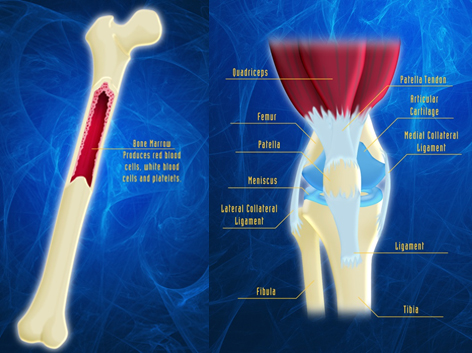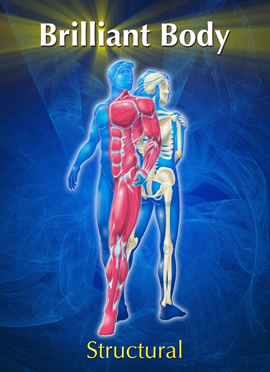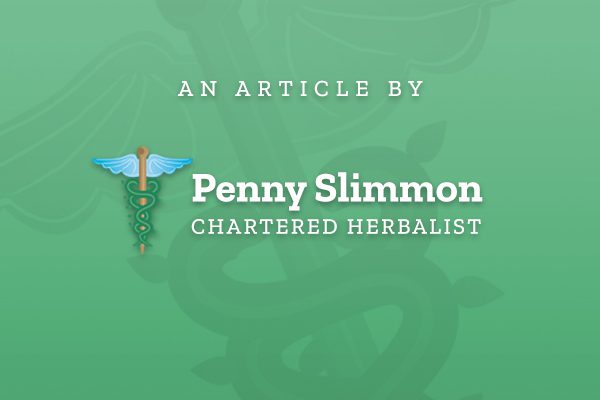The Structural System is made up of bones, bone marrow, teeth, muscles, joints, and connective tissues (tendon, ligaments). Its prime function is to provide the body with form and frame, and give the body the ability to move and work. Calcium, one of the most abundant minerals in the body, is used constantly to replace old bone tissue. Imbalances in the Structural System often affect the Nervous, Circulatory and Urinary Systems.
The other side of this system is skin, nails and hair. Skin, the largest organ of the body, shields the body from the outside environment, while also acting as a cooling system. It is often referred to as your “third kidney” because it gets rid of as much fluid as your kidneys do.
Skin, nails and hair need to be supported nutritionally from the inside and cleansed from the outside to help rid the body of toxins and maintain good health.
Bones and Bone Marrow
There are 206 bones in the adult human body. Bone come in a variety of shapes, and have a complex internal and external structure. They are lightweight, yet strong and hard.
The major functions of bones are:
- To provide structural support for the body
- To provide protection of vital organs
- To provide an environment for marrow (where blood cells are produced)
- To act as a storage area for minerals (such as calcium)
Bone marrow is the flexible tissue within the bones, consisting of red marrow (about 50% and yellow marrow. Yellow marrow consists mainly of fat and is found in the hollow interior of the middle portion of the long bones. Red marrow generates red blood cells, platelets, and most white blood cells. It is found mainly in the flat bones of the hips, breastbone, skull, ribs, vertebrae, and shoulder blades. Bone marrow plays an important role in our immune system because it is where stem cells are produced. Stem cells can differentiate into many cell types to assist in body regeneration and repair.
Joints, Tendons and Ligaments
Joints are the connection where two bones come together. Most joints have what is called “range of motion”, or the ability to flex and bend. They contain cartilage which is tissue located between the bones. Each joint contains a joint capsule-a soft tissue envelope that encircles the joint and attaches to the bone. Ligaments are tough, stabilizing strong bands of sheets of connective tissue that attach one bone to another. A tendon or sinew is a tough band of fibrous connective tissue that connects muscle to bone and can withstand tension. To allow for smooth gliding between bone, muscle, and tendon, there are fluid-filled sacs called bursae within joints. These bursae cushion and protect.

Teeth
Most adults have 32 permanent teeth. Each tooth has its own nerves and circulatory system that carries away metabolic wasted and releases it into the blood stream. Baby teeth begin developing in utero around the sixth week of development, and permanent teeth form in the twentieth week. This part of pregnancy is a crucial time for excellent mineral and nutritional intake. If this window of opportunity closes without the proper nutrients, some teeth may fail to develop.
Structural System issues
Four of the main health issues involving the structural system include osteoporosis, osteoarthritis, rheumatoid arthritis, and fibromyalgia.
- Osteoporosis – Literally means “porous bone” where the density and quality of the bone are reduced. As the bones become more porous and fragile, the risk of fracture is greatly increased. There are often no signs until the first fracture occurs and as we get older, we are losing bone faster than we replace it. In women, the rate of bone tissue loss increases significantly after menopause, when estrogen production stops. The good news is that osteoporosis is now a largely treatable condition and, with a combination of lifestyle changes and appropriate treatment, many fractures can be avoided. Typical medical therapies include exercise, medication to slow bone loss, and supplementing with calcium, magnesium and Vitamin D.
- Osteoarthritis – also called degenerative arthritis or degenerative joint disease, is a group of diseases and mechanical abnormalities that involve the degradation of joints, including cartilage and its adjacent bone. Signs of osteoarthritis may include joint pain, tenderness, stiffness, creaking, locking of joints, and local inflammation.
- Rheumatoid Arthritis – is a chronic inflammatory disorder that most typically affects the small joints in the hands and feet and elbow. It specifically affects the lining of the joint, causing a painful swelling that can eventually result in bone erosion and joint deformity. Rheumatoid arthritis is an autoimmune disorder that occurs when the immune system mistakenly attacks the body’s own tissues, mistakenly not recognizing it as its own. In addition to causing joint problems, it is characterized by daily pain, stiffness and fatigue. It is two to three times more common in women than in men.
- Fibromyalgia – is a common and complex chronic pain disorder. It is characterized by chronic widespread pain, multiple tender points, abnormal pain processing, sleep disturbances, fatigue and often, psychological distress. Fibromyalgia is a syndrome rather than a disease. Unlike a disease, a syndrome is a collection of signs, symptoms, and medical problems that tend to occur together but are not related to a specific, identifiable cause. For those with severe symptoms, fibromyalgia can be extremely debilitating and interfere with basic daily activities. Fibromyalgia is a medically unexplained syndrome, and there is no known cure or universally accepted treatment. Current medical treatment is typically aimed at symptom management, including prescription medication, behavioral intervention, exercise, and alternative medicine.
Fracture Risk and Bone Health Questionnaire
Answer the following questions. The more “yes” answers given, the higher your risk for fracture.
- Are you a female?
- Do you have weak muscles?
- Do you frequently experience worry and anxiety?
- In the past year, have you been more unhappy than happy?
- Do you use antidepressants?
- Do you use acid-blocking medications?
- Do you regularly use or have a history of use of steroids or steroid inhalers?
- Do you drink more than two servings of alcohol daily?
- Do you drink more than one serving of pop daily?
- Do you drink more than two servings of coffee or other caffeinated beverage daily?
- Do you smoke?
- Are you close to menopause or in it?
- Are your menopausal symptoms (hot flashes, night sweats, vaginal dryness, insomnia, weight gain) moderate to severe?
- Have you broken a bone as an adult?
- Has either of your parents ever fractured a hip?
- Have you been told you have osteopenia or osteoporosis after a bone density test?
- Do you have ongoing bone loss as documented by two or more consecutive bone density tests?
- Have you lost and regained 15 pounds at least three times in your life?
- Have you lost half or more of your natural teeth?
- Have you had three or more major surgeries?
- Do you have difficulty healing?
- Do you have joint pain and swelling?
- Do you have difficulty falling asleep or staying asleep?
- Do you consume a high-protein diet?
Did you know that
- You eat refined sugar, circulation within the tooth reverses. Instead of wastes being carried away, waste products from the blood deposit within the tooth, setting the stage for decay.
- Just one 12 ounce can of cola has eight teaspoons of sugar. Data gathered between 2001-2004 suggests that North Americans consume more than 22 teaspoons of sugar a day.
- Carbonated drinks contain phosphoric acid, which can severely deplete blood calcium levels. Calcium is a key component of the bones. This means that drinking pop and carbonated water increases your risk of osteoporosis.
- Diet plays a tremendous role in bone strength. Refined sugars, pop, wheat allergies, compromised intestinal function and lack of mineral absorption all contribute to the thinning out of bones.
- When stress is high, cortisol levels are also high. Cortisol is a natural steroid that normally rises and falls to cope with stress. When it is continually present in the body, it has a suppressive effect on our bone marrow immunity, thereby opening the gateway to potential infections and toxin storage in the body.
- Lead and radiation are stored in the bones. This could set the stage for poor assimilation of calcium and minerals as these toxins accumulate throughout one’s lifetime.
- Widespread overuse of CT scans could lead to tens of thousands of cancer cases and as many as 15,000 deaths for each year that the scanners are used.
- Living things are extremely sensitive to pH and function best (with certain exceptions, such as specific portions of the digestive tract) when solutions are nearly neutral (pH 7). Almost any health care provider, alternative or mainstream, will agree that most health problems begin in an acid environment within the body. What most people don’t know is that if your pH drops below 5.8 you cannot absorb vitamins A, B and E. Nor can you absorb valuable minerals like sulfur, potassium, calcium, etc. from supplements you ingest.
Healthy Lifestyle Choices and Natural Support for the Structural System
- Take vitamin D supplement (2000-4000 IU’s daily), and gets lots of natural sunlight.
- Consume a variety of fresh fruit and vegetables daily (2.5 cups=5 servings). I suggest 5-10 servings. This ideally includes apples, bananas, lemons, limes, and berries as well as asparagus, kale, broccoli, cabbage, arms and sweet potatoes.
- Exercise 30 minutes a day at least 4 times weekly. Include weight bearing and muscle strengthening exercise.
- Every day take a high-quality, premium, pharmaceutical grade nutritional supplement containing at least calcium, magnesium, manganese, and vitamins D and K.
- Include almonds, pumpkin seeds or cashews in your diet.
- Drink 8-10 glasses of spring or filtered water daily.
- Utilize a detoxification regimen at least twice yearly.
- Intentionally choose to focus on joy and gratitude while reducing stress.
- Request digital x-rays when possible and always protect your thyroid during dental x-rays (ask them for a lead covering). Limit unnecessary x-rays
- Use principles of emotional health. Release all bitterness and resentment, and forgive verbally. Releasing negative emotions from your whole being, especially the bone and its marrow, can assist with bone detoxification programs.



